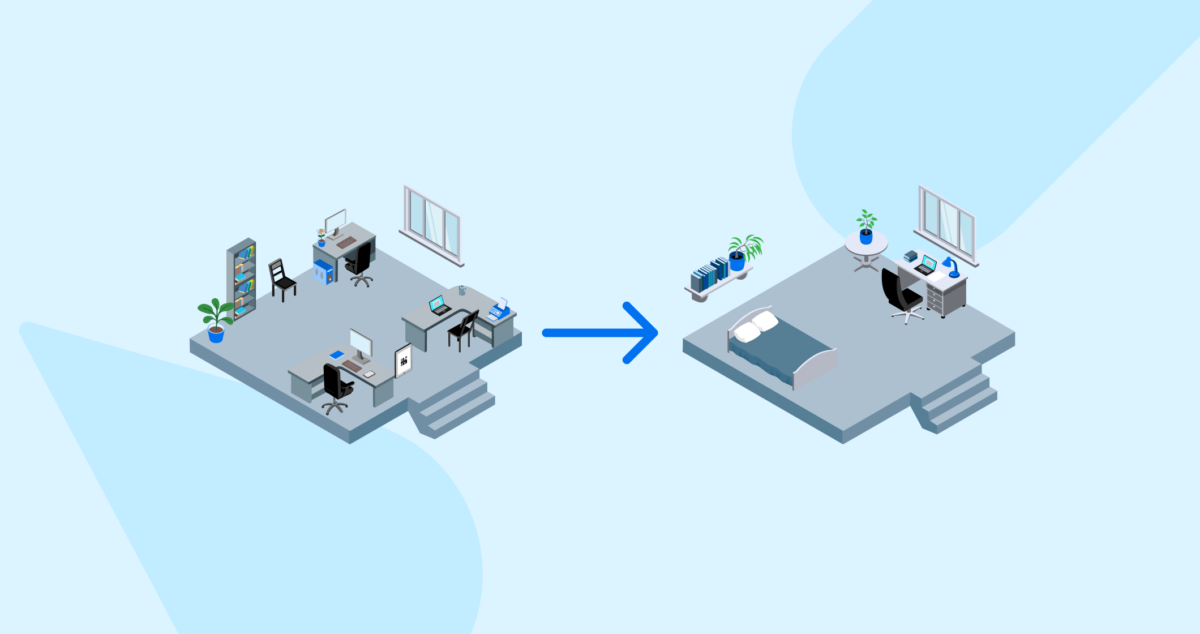
Agile working is certainly another key trend around the modern workplace. This is where employees are becoming more empowered to negotiate a healthier work-life balance and inherent post-covid workplace practices. In many cases, employees are in the driver’s seat in today’s job market, with a rise in bargaining power around having the ability to quit their jobs if it does not satisfy modern workplace flexibility expectations. These changes won't happen overnight, and we are likely to see more modern workplace practices introduced or enhanced as we delve into the post-pandemic economy and work environment. As agile working or other evolving modern workplace practices are being introduced across the globe, we may see a shift or even a decline in the traditional work model to satisfy evolving employee and organizational needs.
Read on to discover more about agile working and how it can transform your workplace.
There is no clear definition of agile working, as it may be implemented uniquely across different workplaces with no exact one size fits all approach.
However, what better way to define agile working than that of The Agile Organisation’s definition? They define agile working as “bringing people, processes, connectivity and technology, time and place together to find the most appropriate and effective way of working to carry out a particular task.”
It provides flexibility for workers to carry out work with more freedom in how they do this. Agile working supports the notion that for as long as productivity and deadlines are met, staff have the affability around how exactly this is achieved.
This can be around decisions such as:

Agile working may consist of any of the following examples:
Hybrid work is certainly not a new phrase as we shift into the post-pandemic, modern workplace. Once a new concept in light of Covid-19 restrictions and safety measures, it is now becoming the new norm and even an employee expectation in workplaces across the globe.

While the concept of agile working may sound similar to flexible working, they are slightly different terms. However, they can work seamlessly together to enable the more modern workplace. Flexible working is more focused on when and where you work that accommodates to work-life balance needs. Flexible working focuses on shifting away from the traditional 9-5 work model to enhance employee well-being and conform to their unique outside-of-work requirements. On the other hand, agile working incorporates flexible working styles but also consists of elements such as ‘how’ and ‘with who’ is work completed.
Agile working is becoming increasingly popular not only because of shifting employee demands and workplace norms, but the variety of benefits it can offer organizations.
Employees are more likely to have more freedom and opportunity around the agile workplace. They may not need to continue to follow strict workplace practices and instead follow the guidelines that can help them achieve quality work and utilize creativity. This can help enhance worker satisfaction, encourage diverse ideas, and even help retain valuable talent.
Agile working can help empower workplaces and organizations to steer away from once strict and unbending protocols. This can help encourage employees to share unique and diverse ideas and even enhance the quality of collaboration.
Companies may be faced with low occupancy levels as the world of hybrid and remote work come into full effect, leaving office spaces empty or unused. The implementation of agile work practices can help workplaces utilize these spaces more efficiently to encourage collaboration and return to the office (RTO).
There is no one size fits all approach when it comes to agile working. Agile working can be implemented uniquely from company to company, with unprecedented changes likely coming into the modern workplace habitually.
If you are thinking about inheriting agile workplace practices, you may want to consider:

However, agile working may not be for everyone, and like any other workplace model, there will be drawbacks. One such consideration are potential barriers or resistance your organization may face when trying to implement agile working. For instance, managers may not be willing to give their employees so much level of trust and flexibility around their work, or employees may simply prefer traditional workplace practices.
Sine has your back when it comes to employee and workplace management. Book a demo with our friendly sales team to see how we can help future proof and modernize your workplace.